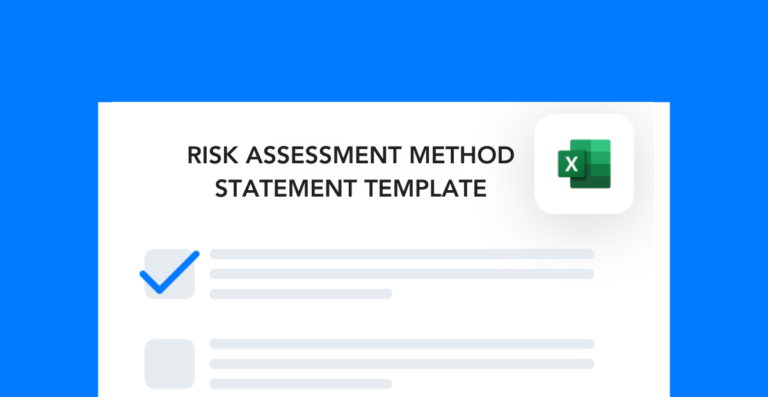Health and safety compliance is complicated on its own. Yet, many teams still struggle to simplify safety procedures to save time and redirect resources. If you want to build a faster, safer, and smarter operation, simplification is the best place to start.
Why Complicated Workflows Hold You Back
Ask any safety manager how to describe their workload and you’ll probably hear words like “unpredictable,” “overwhelming,” and “stressful.” And this is common across industries, not just the high-risk ones with complex regulatory requirements.
Oftentimes, the reason why teams are so stressed out is not because compliance is unrealistic. It’s because their workflows are too complex. Having complicated processes slows you down, increases risk, and drains valuable time away from prevention. In some cases, processes have redundant steps that workers follow. In other cases, there are too many places to upload, find, or manage data. And when there are too many approvals, multiple systems, or endless documents to fill out, simple tasks become stressful.
The cost of complexity goes beyond your team’s frustrations. Think about it. Every extra step in your process increases the chance of errors. This might be a missed safety inspection, unverified training completion, or forgotten corrective action. Instead of focusing on improvement, you end up chasing paperwork and reacting to problems after they happen.
Any one of these oversights could lead to an incident, whether it’s an injury or an unexpected production shutdown. When you simplify safety, the dynamic changes. Removing unnecessary steps and creating consistency unlocks faster, safer, and smarter ways of managing safety.
Free Download
Download this free template map out the risk level and control measures for individual steps within your processes.
Simplifying Safety Creates Faster Workflows
Speed is critical in health and safety. Risks exist regardless of how long it takes you to address them. The more complicated your program, the more vulnerable your team and operation are to incidents and setbacks.
Creating simpler safety processes prevents delays in your response. Here are just some of the ways you can remove barriers for your team to have a more efficient safety program:
- Send out automatic notifications of upcoming deadlines and tasks
- Build reports in minutes from your centralized safety database
- Have employees submit digital forms so you don’t have to scan them
- Automatically route tasks to employees based on their role or department
- Implement a standard process flow to reduce confusion and increase visibility
The reason to make more efficient safety systems is not just to save time. It’s to reduce your exposure to risk by shortening the time it takes to control or remove it. A streamlined process helps you identify hazards sooner, address them quickly, and prevent small operational issues from turning into major incidents.
Protecting Workers is Easier When You Simplify
Another way that simplification improves your EHS program is that it reduces the chance of human error. The more complex a process, the more opportunities there are for your team to miss a step or forget critical details. Examples include forgetting to document an important audit finding, missing a deadline for compliance requirements, or failing to verify employee training.
The best way to simplify safety workflows is to make tasks easier to follow and harder to skip. When you’re trying to do this, ask yourself “where in the process is someone most likely to miss something important?” It’s also a good idea to review past incidents to figure out where a hazard or risk fell through the cracks. Oftentimes, you can find opportunities to simplify when you do a root cause analysis.
Your overall goal with simplification should be to remove barriers for your team. The easier it is for them to report hazards, investigate incidents, etc., the less likely incidents will be. At the end of this process, you should be able to create a workplace where compliance checks happen automatically, and safety isn’t left to chance.
Simplification Provides Clarity for Better Decision Making
When you simplify safety processes, you also get better visibility over your program’s performance. This means you can make smarter safety decisions by answering important questions like:
- Where should we allocate our resources to improve results?
- What are the bottlenecks in our processes?
- Which areas of the operation pose the most risk to the company?
- Which departments, equipment, processes, etc., generate the most incidents?
- Are we compliant with our regulatory requirements?
The best way to get more clarity is to consolidate your data as much as possible. If you have to go to multiple sources for the information you need to make decisions, it’ll be harder to make the right ones.
Simplification requires creating a single source of truth for your health and safety data. One of the best ways to do this is to start using EHS management software to house everything. The best systems have analytics dashboards and reporting capabilities that make understanding performance much easier than manual methods.
With better information, you shift from reacting to incidents to proactively preventing them. That’s the difference between a safety program that struggles to keep up and one that drives real results.
Steps to Simplify Safety
One mistake companies make when attempting to simplify is trying to do it all at once. You don’t want to overwhelm yourself and give up when it gets too hard. Instead, start by figuring out which processes cause the most frustration or delays. Maybe it’s incident reporting, where paperwork piles up before actions get assigned. Or maybe it’s training management, where records live in too many places to be reliable.
Make a list of all your processes and put them in order of how complicated or challenging they are. You might also want to factor in the time it’ll take to simplify. Starting with some easier processes can give you easy wins to stay motivated.
Once you have your list, look for ways to remove steps that don’t add value. Standardize the remaining steps so your team knows exactly what to do every time. Add automation to handle routine tasks like approvals, reminders, or compliance checks. Then, when you’ve gotten your process steps down, centralize the data as much as you can so it’s easier to access and act upon.
Taking these steps will ultimately create a faster, safer and smarter EHS program. Your team will spend less time chasing details and more time building long-lasting solutions that prevent incidents and improve efficiency. With that, you’ll have a more productive EHS department, safer frontline workers, and lower risk exposure throughout your entire company.
The Safety Simplified Playbook
Download a copy of The Safety Simplified Playbook so you can learn how to build a faster, safer, and smarter EHS program that exceeds compliance and drives results.



